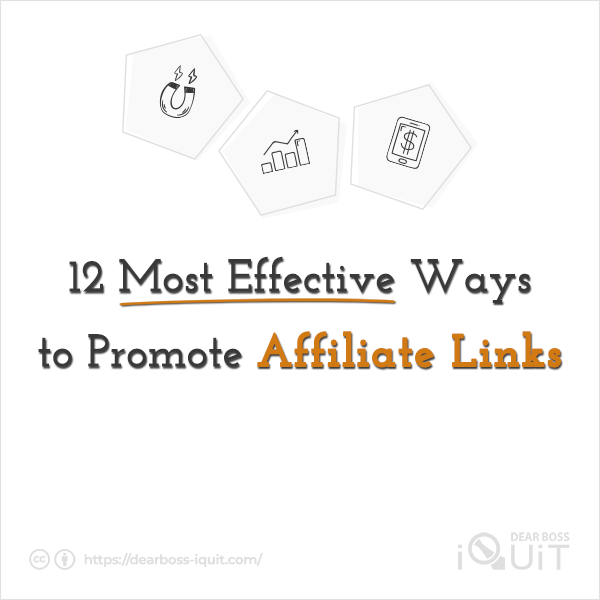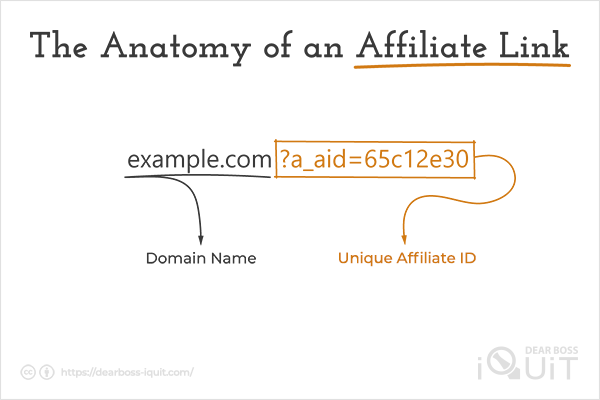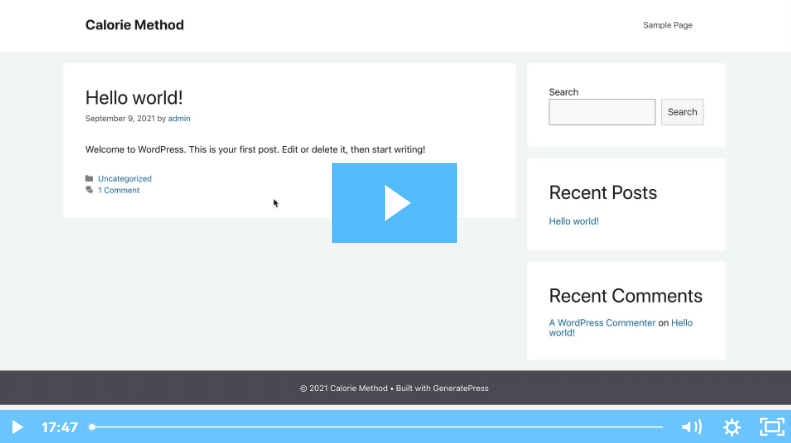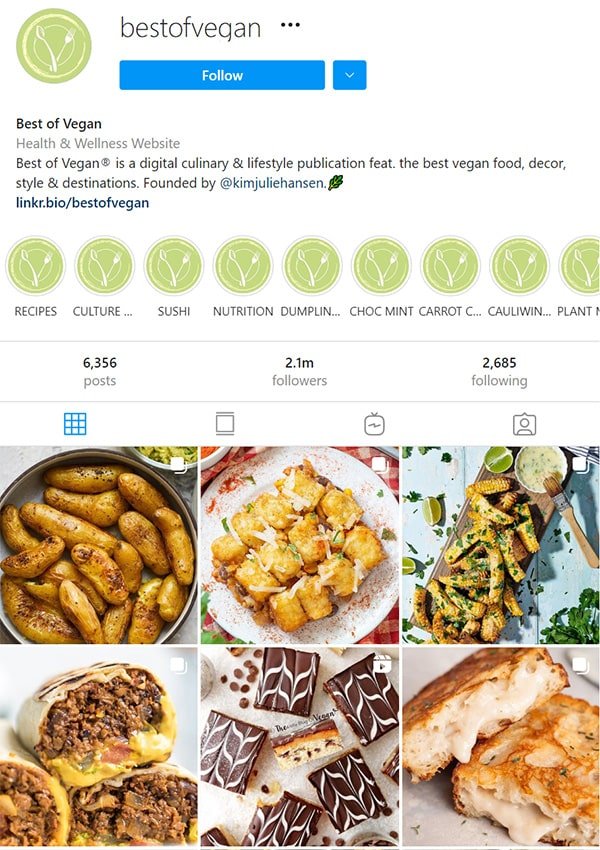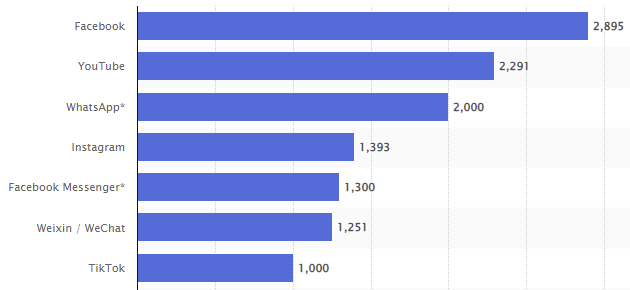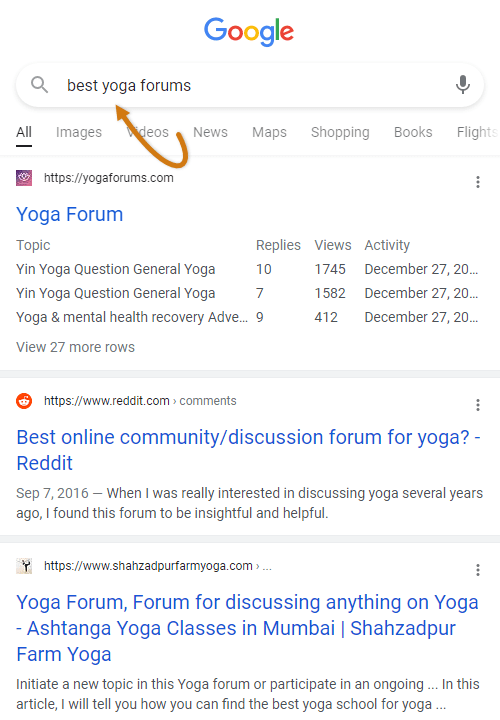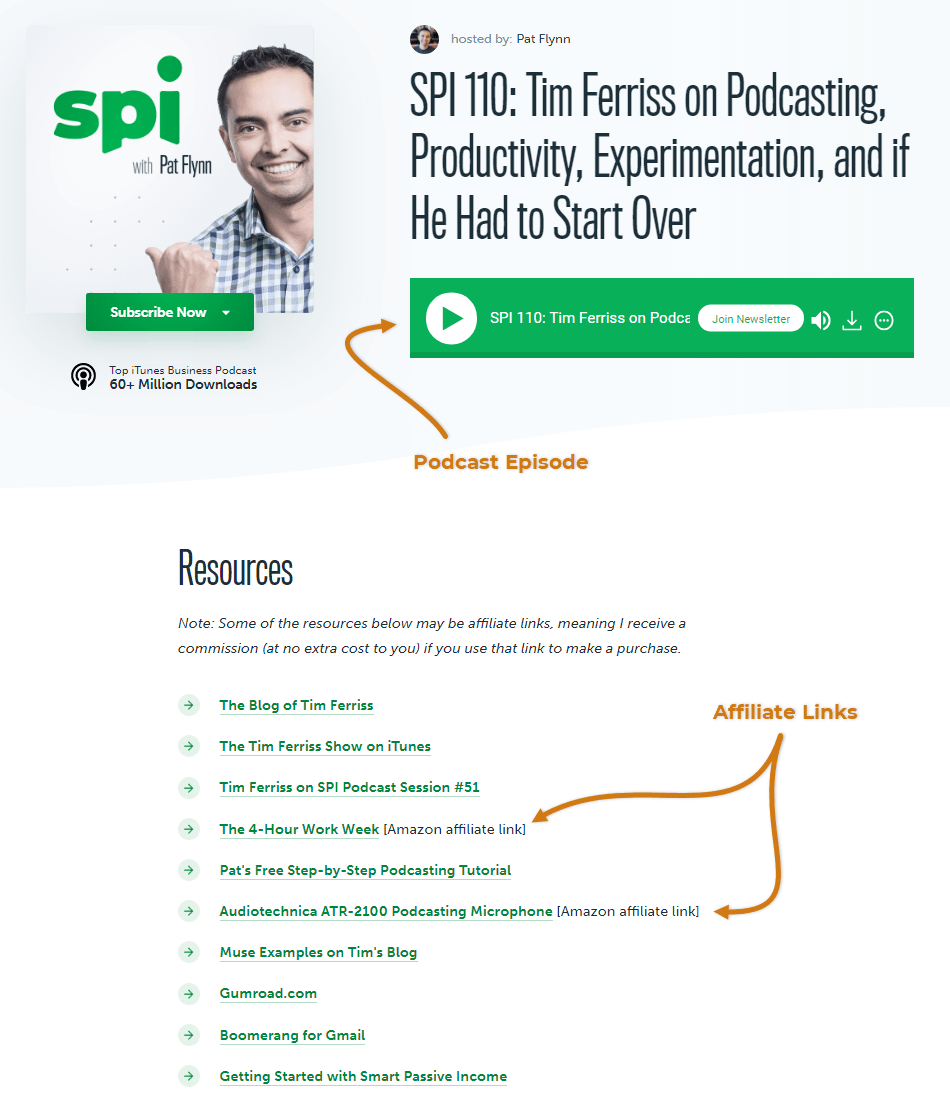Get your hands on your affiliate links.
Start promoting them.
That’s your sole job as an affiliate marketer.
Nevertheless, the effectiveness of the methods used to promote affiliate links is the core element that separates single-figure from 6-figure affiliate marketers.
In an attempt to point you in the right direction and save you from wasting precious time on applying crappy techniques that deliver no results, this article covers the 12 most effective ways to promote your affiliate links, from social media and squeeze pages to paid ads and eBooks.
Let’s start taking a closer look.
What Are Affiliate Links?
Affiliate links are URLs provided by merchants you form affiliate partnerships with, that when clicked, redirect users to said merchants’ online stores.
Each affiliate link contains a unique ID that enables its corresponding merchant to track all the customer sales you refer, and ultimately, determine the exact amount of commissions you should be compensated.
Let me give you a brief example of how affiliate links work.
- You sign up for Amazon’s affiliate program.
- Amazon gives you an affiliate link containing your unique ID.
- You share your affiliate link on Facebook.
- Your friend John clicks your affiliate link and gets redirected to Amazon’s website.
- Amazon sees that John landed on its website after clicking a link that contained your unique ID.
- John gets marked by Amazon as your referral.
- A few minutes later, John purchases several of Amazon’s products.
- Since John’s considered your referral, Amazon credits you with his purchase.
- Amazon issues a commission corresponding to a portion of the total money spent by John.
- Amazon deposits the affiliate commission into your bank account.
Now that we’ve gotten clear on how affiliate links work, it’s time to start examining more closely how to promote them the right way.
How to Promote Affiliate Links (12 Ways)
While the methods you can leverage towards advertising your affiliate links are countless, not all of them are created equally.
And since, as mentioned earlier, the magnitude of your affiliate success is almost exclusively dependent on the effectiveness of your promotional techniques, implementing the wrong ones is like shooting yourself in the foot.
Having said that, if you’d like to stand a chance of becoming a successful affiliate marketer, make sure that you invest most of your resources in online marketing channels that have a track record of delivering significant results, such as:
- Blog
- Content Publishing Platforms
- Social Media
- YouTube Channel
- PPC (Pay Per Click)
- Solo Ads
- Online Communities
- Email Marketing
- Digital Products
- Live Webinars
- Direct Banner Advertising
- Podcast
1. Blog
One of the most efficient and most used channels for promoting affiliate links is a blog.
A blog (short for “weblog”) is a website or part of a website that consists of regularly published content in the form of articles or else “blog posts” that revolve around one or multiple subjects.
Blog articles come in many different shapes and sizes, such as:
- Product Reviews
- Tutorials
- Roundups
- Case Studies
- Listicles
- Personal Stories
- & more
To give you an example, what you’re reading right now is an article tutorial published on the blog Dear Boss I Quit that gears towards the subject of promoting affiliate links.
Getting your affiliate links in front of potential customers through blogging can be achieved by strategically placing them throughout your blog via:
- Image Banners
- Native In-Text Ads
- Floating Bars
- Popups
- etc
The more blog content you publish, the higher your chances of reaching a broader and more diverse spectrum of potential buyers.
Furthermore, producing valuable blog content will significantly increase your conversion rates by assuring your target audience that you’re a credible expert who can answer their questions, address their concerns, and solve their problems.
Starting an affiliate blog is slightly costly and effortful, but thanks to the advancements in site-building technology, it isn’t as complicated and pricey as it used to be a few years ago.
The 17-minute video right below outlines the process of launching a simple WordPress-based affiliate blog in just 30 seconds without spending a single dime.
Lastly, once your affiliate blog is up and running, make sure to start boosting its exposure by utilizing search engine optimization (SEO).
Search Engine Optimization (SEO) is a set of practices designed to “convince” search engines like Google, Bing, and Yahoo to place your blog at higher positions of their results. The higher your blog ranks on the search results pages of a search engine, the more traffic it’ll be receiving.
Another way of marketing your affiliate links through blogging, but without actually building a blog of your own, is by leveraging content publishing platforms.
2. Content Publishing Platforms
Content publishing platforms are third-party blogs that allow you to leverage their existing infrastructure towards writing, publishing, and distributing articles online without having to put together a blog of your own.
A few of the most well-known and most widely used content publishing platforms include, but aren’t limited to:
- Medium
- Blogger
- LinkedIn Articles
- & Ezine Articles
The primary advantage of advertising your affiliate links on such platforms is that most of them possess massive, well-established audiences. For example, Medium receives 85 – 100 million active readers per month.
Getting just a fraction of such a large number of users interested in reading your content, trusting in your expertise, and purchasing some of the products you promote, could yield thousands of dollars in monthly affiliate commissions.
The downside of following such an approach is that all your affiliate promotions will constantly be at the mercy of potentially unfavorable changes that could take place on each content publishing platform’s terms and conditions.
For instance, for now, Medium allows content that contains affiliate links as long as you make an appropriate affiliate disclosure statement.
However, if someday Medium decides to prohibit affiliate links just like Pinterest did a while back, any affiliate business built on it will practically vanish overnight along with all its revenue.
3. Social Media
The second-best option for promoting affiliate links – after running a blog – is social media.
Social media platforms are being used by 57.6% of Earth’s entire population every single day, they’re free to join and operate, and they enable marketers to seamlessly share their affiliate links with their target audience via dedicated, branded pages.
The five most used social media platforms among affiliate marketers are:
- TikTok
Picking the right social media platform for your affiliate endeavors boils down to two main factors.
- Your target audience – For instance, Gen Zers tend to spend most of their time on Instagram and TikTok. On the other hand, millennials and baby boomers prefer hanging out on Facebook.
- The affiliate products you promote – For example, platforms that support long written copy like Facebook and LinkedIn are excellent for promoting B2B products and services. On the contrary, Instagram and Pinterest are better for promoting visually appealing B2C offers such as food, travel, clothes, cosmetics, and pastries.
Once you’ve determined which social media platform(s) you’re going to be advertising your affiliate links on, it’s time to start reaching out to your target audience by consistently publishing niche-relevant content optimally 1-3 times per day.
To give you an example, the Instagram page “Best of Vegan” that targets people in the vegan niche focuses on publishing posts and videos about vegan-related subjects like vegan recipes and cooking tips for vegans.
If you decide to do affiliate marketing via social media, you’ll need to emulate a similar approach tailored based on your target niche.
4. YouTube Channel
Another approach to promoting affiliate links that could potentially be even more effective than operating a blog is launching a YouTube channel.
YouTube is extremely popular across all current generations, from baby boomers to Gen Z. Furthermore, it’s the second most populated social network after Facebook and the second most used search engine after Google, with 2.3 billion active users.
Moreover, generally, video content delivers higher conversion rates than plain text.
Lastly, as an affiliate YouTuber, you’ll have the option to create an additional revenue stream on top of your affiliate promotions by displaying ads throughout your video content.
Promoting your affiliate links on YouTube is pretty straightforward.
First, head over to YouTube, click your profile picture at the top right corner, and select create a channel. Once your channel is live, start consistently publishing videos that appeal to your target audience.
For example, The Tech Chap YouTube channel that targets the tech gadgets niche focuses on publishing YouTube videos that revolve around nothing but subjects relevant to tech gadgets, such as:
- Laptop reviews
- Smartphone unboxings
- Product comparisons
- Purchasing guides
- Device tips & hidden features
- & more
Lastly, start placing your affiliate links in the description below each of your videos. Occasionally, some marketers might even incorporate affiliate links to their video production gear such as cameras, microphones, light, software, etc.
Contrary to popular belief, building a decent income as an affiliate YouTuber doesn’t involve having millions of viewers. For instance, if you’re promoting an affiliate product that pays a $50 commission per sale and converts at an average rate of 1%, you can be earning $10,000 per month with as few as 20,000 monthly viewers.
5. PPC (Pay Per Click)
Pay-per-click is an online advertising model in which marketers place ads on dedicated advertising platforms in exchange for a fee per each time the ads get clicked by an end-user.
PPC ads can be broken down into multiple different categories, such as:
- Display Ads: Banners, texts, or images placed on third-party websites
- Paid Search Ads: Displayed on search engines like Google & Yahoo
- Social Media Ads: Served on websites like Facebook & Instagram
- Instream Ads: Video promotions shown before or during video streaming
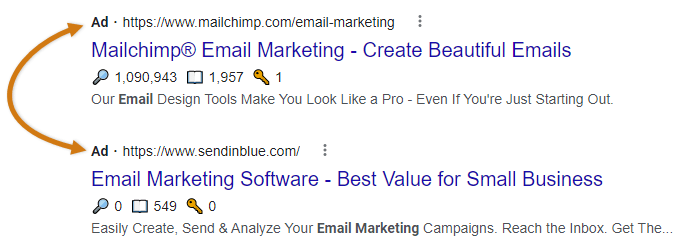
A few of the most popular platforms for promoting affiliate links on a pay-per-click basis include, but aren’t limited to:
- Google Adwords
- Bing
- YouTube
- & more
PPC is the best marketing technique for getting your affiliate links in front of potential customers as fast as possible.
However, running PPC ads involves a significant monetary investment that doesn’t guarantee the return of any profit as the clicks you pay for might not bring in any actual affiliate sales.
And typically, newbies to affiliate marketing experience immense financial losses equivalent to hundreds, or maybe, even thousands of dollars, until they’ve gathered enough feedback to understand how to piece together a profitable PPC campaign.
6. Solo Ads
Solo ads are pretty much identical to PPC.
However, unlike PPC ads that get served on third-party platforms, solo ads are email-based promotions delivered to the email subscribers of third-party marketers by the marketers themselves.
Therefore, solo ads can be very efficient in generating affiliate sales because they allow you to piggyback on the solid and trustworthy relationships other marketers have built with their subscribers.
The main downside of solo ads is that you could end up wasting hundreds of dollars on subpar traffic purchased from vendors with poor-quality, low-converting email lists built by implementing shady techniques, such as:
- Purchasing subs from other marketers
- Using email scraping software
- Leveraging bot-filled lists
- Gathering niche-irrelevant subs
- & more
One of the best ways to ensure that your solo ad campaigns aren’t just depleting your resources for nothing is to always purchase them from nowhere but reputable providers like:
- Udimi
- TrafficForMe
- SmarterSoloAds
- & EasySoloAds
If you’re a beginner to affiliate marketing, I’d advise you to steer clear of solo ads until you possess enough experience to assess which email lists are worth investing in and which not.
7. Online Communities
One of the most straightforward methods of promoting affiliate links is on online communities, such as:
- Forums (e.g., Reddit)
- Social media groups (e.g., Facebook)
- Q&A platforms (e.g., Quora)
- Real-time chat apps (e.g., Discord)
- etc
Begin by using Google to locate communities of people who are the most likely to be interested in purchasing the affiliate products you promote.
For instance, if you promote yoga gear, head over to Google and search for “best yoga forums.”
Furthermore, you could also browse through multi-topic communities like Reddit and Quora for yoga-related discussion boards, subreddits, spaces, etc.
Promoting affiliate links in communities that revolve around unrelated topics will result not only in making no sales whatsoever but in receiving permanent bans.
Once you’ve found a community that suits your affiliate niche, check its user guidelines to determine whether, how, and where it allows the placement of affiliate links. For example, some communities prohibit the usage of more than one affiliate link per post, while others permit affiliate links only on post signatures.
Lastly, invest time and energy in gaining the community’s trust by actively interacting with its members, sharing valuable insights, answering questions, and providing solutions to problems.
Do NOT start randomly spamming your affiliate links like a madman before delivering lots of upfront value to the members of any given community, or you’ll be setting yourself up for failure.
Community users and admins hate desperate affiliate spammers who care about nothing but making a quick sale, so if they identify you as one, they’ll consider you a threat that should be reported and eliminated as soon as possible.
8. Email Marketing
Despite its old origins, email marketing is still one of the most efficient channels for advertising affiliate links.
The first step to getting started is signing up for an email marketing platform, like:
- ConvertKit
- MailChimp
- SendinBlue
- MailerLite
- & GetResponse
Such platforms grant access to all the resources you’ll need to launch, maintain, and optimize your email marketing campaigns – from squeeze pages builders and lead capturing forms to automated email sequences and mass email blasts.
After enrolling in an email marketing platform, it’s time to create an automated email welcome sequence. That is a series of emails distributed to your subscribers at predetermined intervals upon subscribing to your email list.
The key to creating a successful email welcome sequence is gearing at least 80% of your outgoing emails towards earning the trust of your subscribers by delivering valuable, informative pieces of content that contain no affiliate promotions.
Here’s how a typical email welcome sequence should look like:
- Upon subscription: Welcome email
- Day #2: A few words about your business
- Day #3: Introduce yourself and tell your story
- Day #4: Outline the benefits of your business
- Day #6: Set expectations straight
- Day #8: Share your top pieces of content
- Day #11: Provide answers to FAQ
- Day #14: Promote a relevant affiliate product
It might sound counterintuitive, but filling your email sequence with promotions to the brim will turn your subscribers off and hurt your affiliate conversions.
Once your automated email sequence is in place, begin gathering email subscribers by creating a squeeze page and a lead magnet.
A squeeze page is a standalone page designed to collect visitors’ email addresses via a lead capture form.
A lead magnet is a valuable resource (e.g., ebook, template, discount, case study, free trial, etc.) that you’ll be giving away as an incentive to anyone who submits their email address to your lead capture form.
Here’s an example of a squeeze page offering a free trial as a lead magnet.
Most email marketing platforms provide all the tools, resources, guides, and templates you’ll need to put together squeeze pages and lead magnets from scratch within minutes.
An alternative to acquiring email subscribers is purchasing a premade email list from a third-party marketer. However, if you go down that road, you will likely end up wasting a lot of money on irrelevant subs, bots, and unnurtured leads who’ll unsubscribe from your list the moment they receive your first email campaign.
Lastly, start marketing your squeeze page via as many online marketing channels as possible (e.g., social media, PPC, blog, etc.)
9. Digital Products
Another efficient tactic of advertising affiliate links is incorporating them into digital products, such as eBooks, online courses, and even lead magnets.
For instance, if you’re in the weight loss niche, you could put together a short eBook that narrates the story of someone who lost a significant amount of weight, all the while embedding affiliate links to a few weight loss products that helped them achieve that goal.
Another example would be promoting a specific antivirus software throughout an online course that revolves around teaching how to boost the security of electronic devices.
Whatever the case, always ensure that the digital products you create gear towards providing value to those who consume them.
Poor-quality, overly salesy digital products developed for the sole purpose of promoting affiliate links will most likely damage your reputation, diminish your conversion rates, and ultimately yield zero return on your investment.
Lastly, start giving all your affiliate monetized digital products away for free via:
- Social media
- Online forums
- Amazon Kindle
- Email marketing
- YouTube
- etc
Since your primary goal as an affiliate marketer is getting your affiliate links in front of as many potential customers as possible, selling your digital products will almost certainly prove to be counterproductive.
Nevertheless, if they happen to acquire a broad appeal and a lot of positive feedback, you could experiment with selling them down the road.
10. Live Webinars
An additional superb way of advertising your affiliate links is hosting live webinars on third-party platforms, such as:
- YouTube
- Adobe Connect
- Zoom
- Livestorm
- & more
According to RingCentral, live webinars have higher conversion rates than other marketing channels, converting between 5% and 20% of viewers into buyers.
The first step to leveraging live webinars towards promoting your affiliate links is determining your marketing angle.
For example, your marketing angle could revolve around outlining the benefits of your chosen affiliate product, revealing how it’s better than its competitors, explaining how it helped you or someone else overcome a problem or achieve a goal, etc.
Whatever your marketing angle is, you need to ensure that your live webinar is:
- educational
- valuable
- engaging
- & media-rich
Next, write your webinar’s script. Keep in mind that 1000 words correspond to 6 minutes of speaking time.
Once the script is ready, turn its most essential elements into a PowerPoint presentation. That’s going to be the focal point of your entire webinar, so make it look professional.
After that, start spreading the word about your live webinar via any other marketing channel you see fit (e.g., social media, PPC, blog, etc.)
Lastly, place your affiliate links at distinct spots, such as:
- The webinar’s description
- Live chat (if applicable)
- Your profile
- Inside the presentation
- etc
Here are three tips that could help you significantly boost the conversion rates of your live webinars:
- Focus on delivering value. Avoid making your webinar sound like a lengthy sales pitch.
- Start by introducing yourself. Most of your viewers won’t know who you are, so make sure to provide some info about yourself, explain what your webinar is about, and why they should listen to you.
- Activate your webcam. Place its feed at the left or right bottom corner of the webinar so that attendees can watch you making the presentation live.
11. Direct Banner Advertising
Direct banner advertising is yet another decent way of promoting your affiliate links.
The process consists of paying a fixed monthly fee directly to other marketers in your niche in exchange for placing a banner ad pointing to the affiliate products you promote at some unused area on their website (e.g., header, sidebar, footer, etc.).
Direct banner advertising falls into the “paid ads” category, just like PPC.
However, contrary to PPC, direct banner advertising:
- Can be less lucrative
- Runs on a fixed monthly fee, not on a pay-per-click basis
- Is more cumbersome and time-consuming
- Involves a lot of manual outreach
- Is more challenging to track, monitor, and optimize
Lastly, there’s a chance that some publishers won’t allow you to have your banner ads linking straight to affiliate links. In such cases, you’ll have to use links pointing to a website or landing page that, in turn, contain your affiliate links.
12. Podcast
Last but not least, affiliate links can be advertised via podcasts.
A podcast is a series of live or recorded audio broadcasts that focus on a particular subject. You can think of podcasting as the audible version of blogging.
The process of doing affiliate marketing on a podcast is relatively simple.
First, pick a topic that meshes perfectly with the affiliate products you’ll be promoting. For instance, if you’re promoting food blenders, a podcast about cooking would most probably perform a lot better than one about PC gaming.
Secondly, sign up for a podcast hosting provider to store and serve your audio files as well as create and update your RSS feed, such as:
- Buzzsprout
- Captivate
- Transistor
- Podbean
- Resonate
- etc
Afterward, integrate your hosting service with as many popular podcasting directories as possible, like:
- Apple Podcasts
- Spotify
- Google Podcasts
- Stitcher
- & TuneIn
Once everything is in place, start producing high-quality podcast content.
Lastly, incorporate your affiliate links in the summary section of each podcast episode.
Here’s an example of how one of the most successful affiliate marketers, Pat Flynn, markets affiliate links on his podcast.
The main downside of affiliate podcasting is that most audiences consume podcast content on the go, usually while doing something else like driving, cooking, or jogging.
As a result, any podcast listener who might be interested in purchasing whatever you promote will have to go out of their way at some later point and revisit your podcast’s landing page to locate your affiliate link.
This kind of extra effort on behalf of potential buyers might not seem like such a big deal, but it’ll almost certainly result in losing tons of affiliate sales.
As such, I wouldn’t recommend utilizing podcasting by itself but rather in conjunction with another higher converting marketing channel like a blog, a YouTube channel, or a social media page.
Conclusion
Knowing how to promote your affiliate links efficiently is key to ensuring success in your affiliate marketing endeavors.
As such, now that you’re aware of the 12 best approaches to conducting your affiliate promotions, make sure to start putting them into practice ASAP.
If you’re a beginner, don’t overwhelm yourself by trying to do everything and be everywhere at once. Just get started by implementing the marketing channel you feel the most comfortable with until you’ve mastered its basics.
At that point, start experimenting with other strategies, track their metrics and performance, and once you’re clear on the ones that yield the highest returns, combine them into a powerful, high-converting affiliate marketing funnel.
For instance, you could mix an affiliate blog with a squeeze page or a YouTube channel with live webinars and a podcast.
No matter which methods you decide to leverage towards advertising your affiliate links, always keep in mind that constantly forcing your affiliate promotions down your audience’s throat is a surefire way to have your affiliate business blow into pieces.
Affiliate marketing is a game of value, not sales. If you deliver no value, expect no sales.
If you have any questions or require further help, I encourage you to leave a comment right below or contact me right here, and I’ll do my best to get back to you as soon as possible.
Best of luck in your affiliate journey!
Harry, Founder & Editor at dearboss-iquit.com
